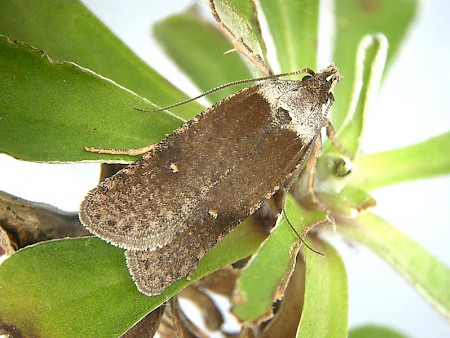32.004 BF685
Levipalpus hepatariella
(Lienig & Zeller, 1846)
This very rare and local species occurs only in a few scattered localities in the Scottish Highlands and the Isle of Coll, Inner Hebrides.
Until 2001 there were less than 20 records of the species in Britain, and no records of the early stages. In that year the larvae were discovered and described by R.J. Heckford and J.R. Langmaid, and since then both the larvae, and subsequently reared imagos have been fully documented and photographed.
The larval foodplant is mountain everlasting (Antennaria dioica). It was believed that the larvae fed at first on the flowerheads, and then ate into the stems, but these recent studies of the larvae indicated that at least the later instars feed on the lower leaves of the plants, from silken tubes extending into the soil. The larvae, when disturbed, quickly retreat into the silken tubes and emerge from the other end into the soil beyond.
Adult moths have been recorded in the wild August and early September, and in captivity have emerged in July.

 UKMoths
UKMoths 




